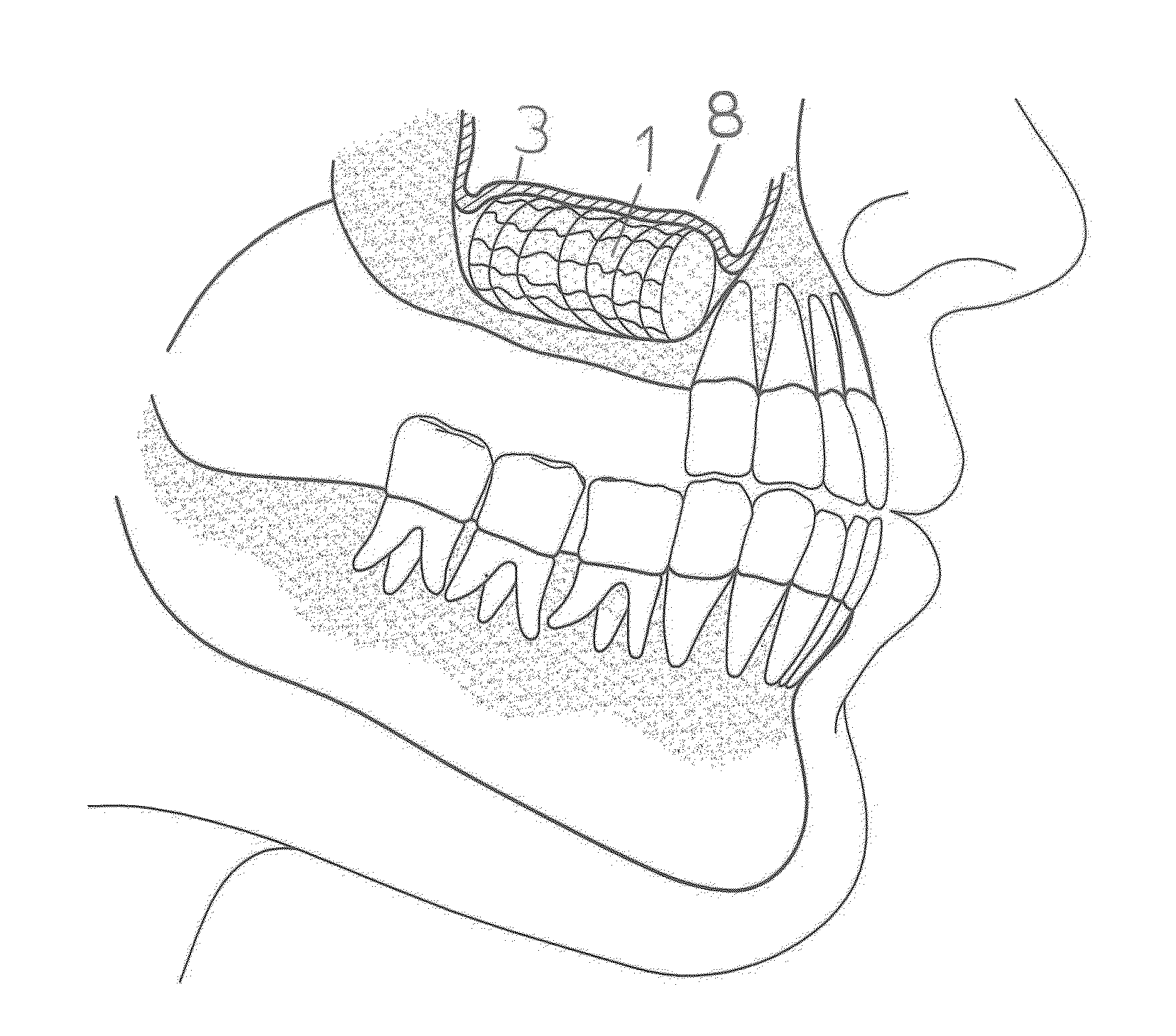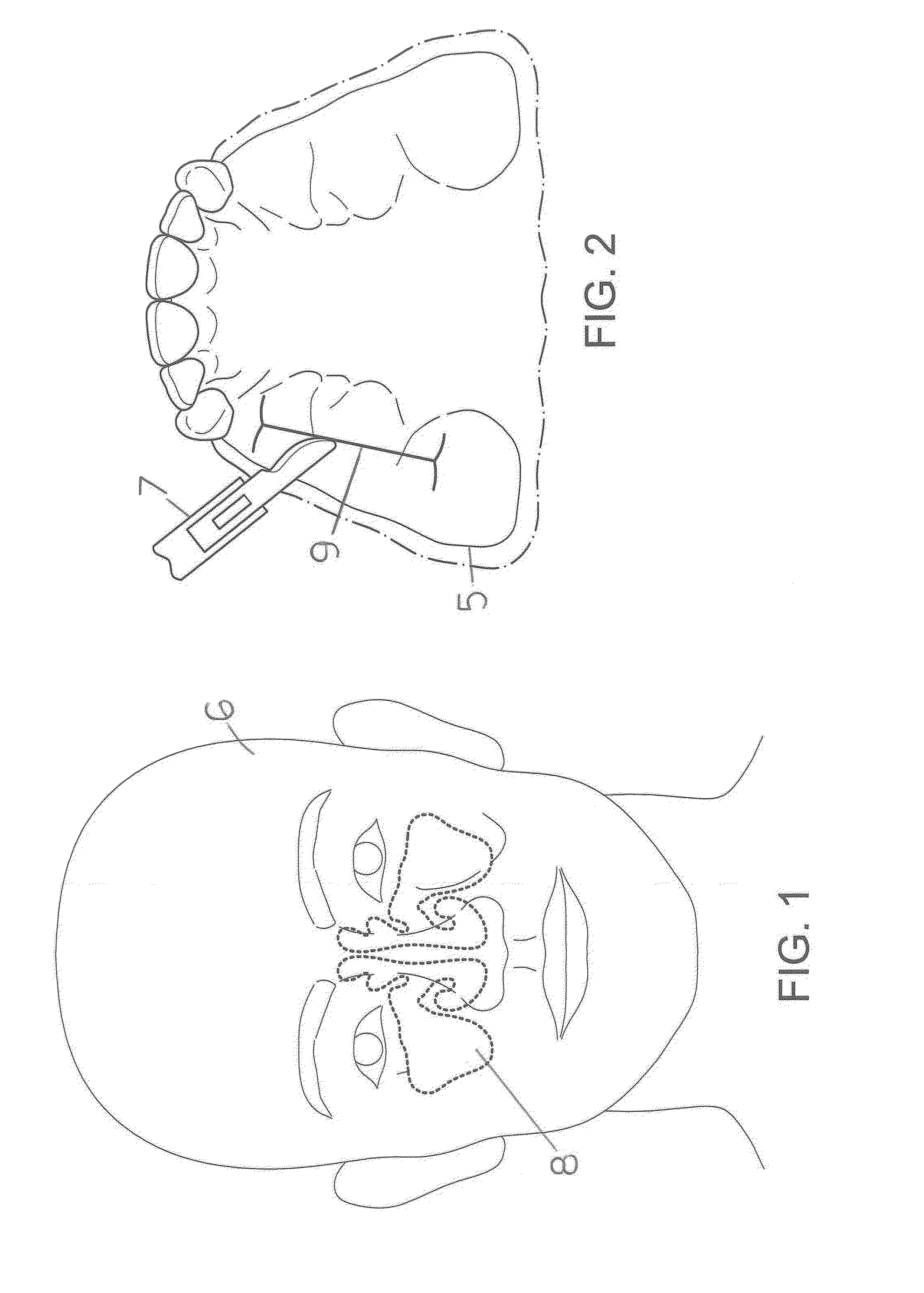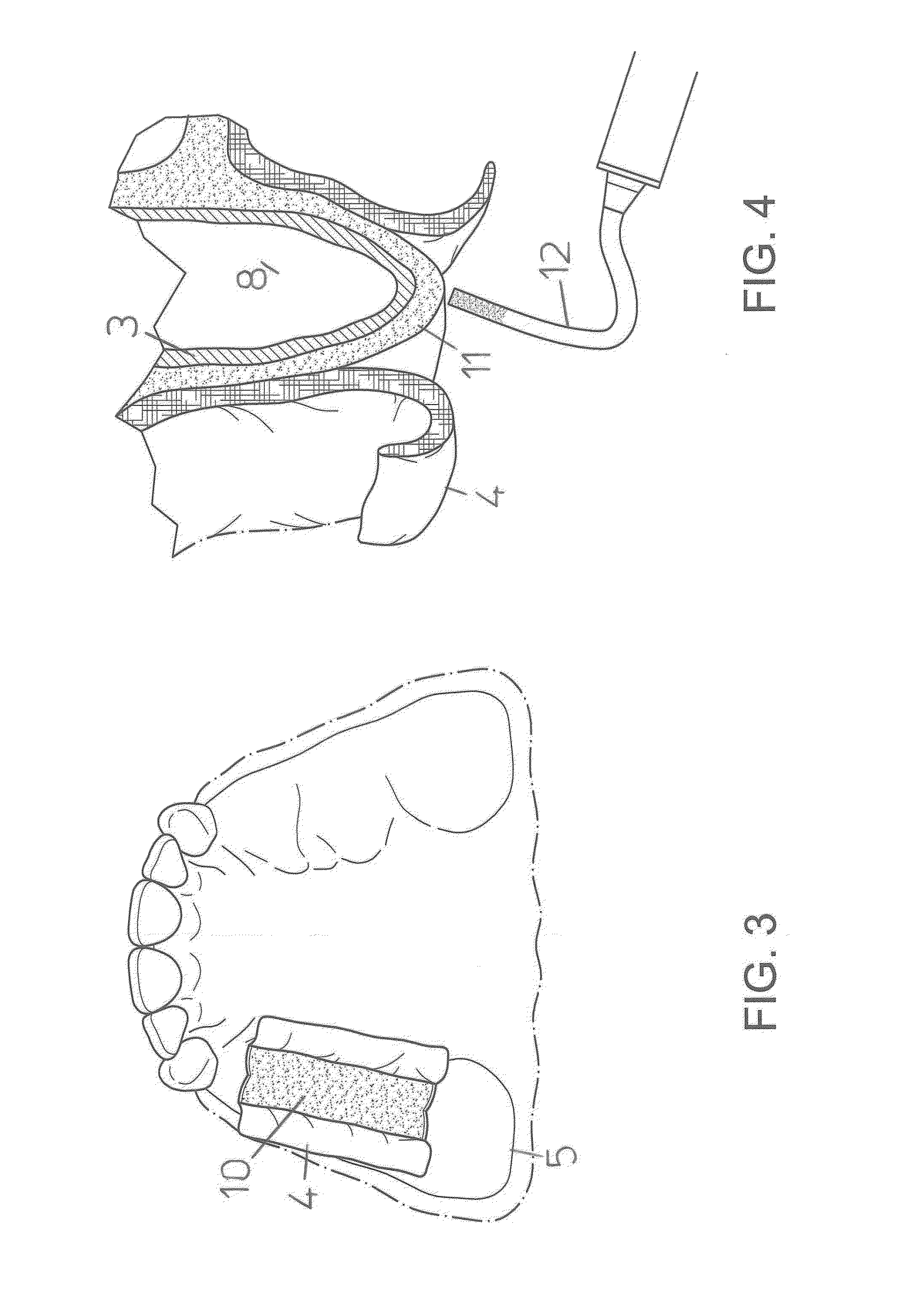Method for maxillary sinus floor elevation
a maxillary sinus and floor elevation technology, applied in the field of maxillary sinus floor elevation, can solve the problems of reducing the survival rate of patients, jeopardizing the stability of implants, and authors did not report differences in survival rate between, so as to increase the neo-osteogenic potential, minimize invasivity and complications, and expand the space available for neo-osteogenesis
- Summary
- Abstract
- Description
- Claims
- Application Information
AI Technical Summary
Benefits of technology
Problems solved by technology
Method used
Image
Examples
Embodiment Construction
[0043]Anatomy of the maxillary sinus region will now be briefly described with reference to FIG. 1. FIG. 1 is a simplified, front view illustration of a human face 6, showing the position of the maxillary sinus 8.
[0044]FIG. 2 is a simplified occlusal view of the jaw 5 with distal edentulia, and a scalpel 7 A crestal incision of the mucosa 9 will be carried out.
[0045]FIG. 3 is a simplified occlusal jaw 5 view, vestibular and palatal full thickness flaps 4 will be elevated and the bone is exposed 10.
[0046]FIG. 4 is a simplified, sectional illustration of the maxillary sinus 8, lateral maxillary walls 11, schneiderian membrane 3 and reflected mucoperiosteal flaps 4, The osteotomies will be performed by the use of a vibrating sonic handpiece 12 (Sonosurgery® TKD Calenzano Fi, Italy) carrying a straight 0.25 mm thick micro saw (SFS 102 Komet Gebr. Brasseler-GMBH, Lemgo 32631 Germany) and exercising a minimal pressure, similar to that of a pencil when writing (about 2-3 N max).
[0047]FIG. ...
PUM
 Login to View More
Login to View More Abstract
Description
Claims
Application Information
 Login to View More
Login to View More - R&D
- Intellectual Property
- Life Sciences
- Materials
- Tech Scout
- Unparalleled Data Quality
- Higher Quality Content
- 60% Fewer Hallucinations
Browse by: Latest US Patents, China's latest patents, Technical Efficacy Thesaurus, Application Domain, Technology Topic, Popular Technical Reports.
© 2025 PatSnap. All rights reserved.Legal|Privacy policy|Modern Slavery Act Transparency Statement|Sitemap|About US| Contact US: help@patsnap.com



